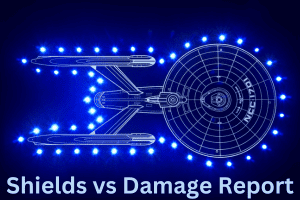Zero Trust for OT Security – Overcoming Legacy Device Security Gaps and Technical Debt
The proliferation of interconnected Operational Technology (OT) devices in critical infrastructure and industrial sectors has ushered in new opportunities for increased efficiency and automation. However, this digital transformation also brings forth significant cybersecurity challenges. Perimeter security is not a sufficient solution and legacy devices and systems often lack robust security measures, leaving critical infrastructure vulnerable to cyber threats. To address this issue, implementing a Zero Trust model for OT security is emerging as a vital approach to protect these environments from potential breaches. This article explores the importance of Zero Trust in OT security and highlights its effectiveness in overcoming legacy device security gaps and technical debt.
Weaknesses of Perimeter Security
Network perimeter security, while important, is increasingly considered insufficient due to several factors:
Evolving Threat Landscape: The threat landscape is constantly evolving, and attackers continuously develop new techniques and strategies to bypass traditional perimeter security measures. Advanced threats, such as zero-day exploits, advanced persistent threats (APTs), and social engineering attacks, may not be adequately detected or prevented by traditional perimeter security solutions.
Insider Threats: Perimeter security measures primarily focus on external threats, but insider threats pose a significant risk as well. Malicious insiders with authorized access can bypass perimeter defenses, making it crucial to implement additional security controls within the network to mitigate insider risks.
Lateral Movement: Once an attacker breaches the network perimeter, they can move laterally within the network to target valuable assets or critical systems. Perimeter security solutions are not designed to prevent or detect lateral movement effectively, allowing attackers to exploit vulnerabilities within the internal network.
Distributed and Cloud-Based Environments: With the increasing adoption of distributed architectures and cloud computing, the traditional concept of a network perimeter becomes blurred. Organizations now have a distributed network infrastructure with multiple entry points, making it challenging to secure a single fixed perimeter effectively.
Encrypted Traffic: Encryption technologies, such as Transport Layer Security (TLS), are widely used to protect data privacy and integrity. While encryption enhances security, it also poses challenges for traditional perimeter security solutions that rely on inspecting network traffic. Encrypted traffic can hide malicious activities from inspection, making it harder to identify and mitigate threats.
Human Factor: Perimeter security measures often overlook the human factor, which can be exploited by attackers through social engineering, phishing, or other manipulation techniques. A well-crafted attack targeting individuals within an organization can bypass
Legacy OT Device Challenges
Many OT systems, such as building automation (smart buildings) and industrial automation controls (manufacturing), were designed and deployed before security concerns became a top priority. These systems were built with the assumption that they would operate within closed networks, isolated from the external world. However, the rapid integration of IT and OT systems has exposed these legacy devices to a range of cyber threats.
Legacy devices often lack essential security features, such as encryption, authentication protocols, and regular security updates. These vulnerabilities create significant security gaps, leaving automation control systems susceptible to attacks. Additionally, the long lifecycles of these devices make it challenging or impractical to implement timely security patches and updates, further increasing the risk. For some devices the only way to overcome this technical debt is to either replace them or add security externally.
Zero Trust Approach
Zero Trust is a security model that operates under the fundamental principle of “never trust, always verify.” Unlike traditional security models that rely on perimeter-based defenses, Zero Trust assumes that no device, user, or network component is inherently trustworthy. Instead, it enforces strict access controls, continuous monitoring, and verification of every device and user, regardless of their location or network.
Applying Zero Trust to OT security means adopting a granular approach to access control, authentication, and authorization. Each user, device, or application attempting to access OT systems must undergo rigorous verification and authentication processes. This approach eliminates the reliance on implicit trust and minimizes the attack surface by granting access only to authorized entities.
Benefits of Zero Trust for OT Security
Enhanced Security Posture: Zero Trust provides a proactive defense strategy, significantly reducing the risk of unauthorized access and lateral movement within OT networks. By continuously monitoring and verifying devices and users, organizations can detect and respond to potential threats promptly.
Improved Visibility and Control: Zero Trust enables organizations to gain comprehensive visibility into their OT environment. By closely monitoring device behavior and user activities, suspicious actions can be quickly identified and remediated.
Mitigation of Legacy Device Vulnerabilities: Legacy devices can be a significant challenge when it comes to security. Zero Trust helps overcome these vulnerabilities by implementing an additional layer of security to legacy devices that cannot be easily updated or replaced.
Compliance and Regulatory Alignment: Many industries, such as energy, healthcare, and transportation, have stringent regulatory requirements for securing critical infrastructure. Zero Trust helps organizations meet these compliance standards by implementing robust security controls and demonstrating a proactive security posture.
Future-Proofing OT Environments: The adoption of Zero Trust in OT security enables organizations to build a scalable and resilient security framework. This model ensures that as new devices and technologies are integrated into the OT environment, they are subject to the same rigorous security protocols, regardless of their age or origin.
Conclusion
Protecting critical infrastructure and industrial systems from cyber threats is an imperative task in today’s interconnected world. With legacy devices and technical debt posing significant challenges, a Zero Trust model provides a robust and effective approach to OT security. By implementing Zero Trust principles, organizations can enhance their security posture, gain better visibility and control over their OT environment, mitigate legacy device vulnerabilities, meet regulatory requirements, and future-proof their infrastructure. Embracing Zero Trust is crucial in safeguarding the integrity, availability, and confidentiality of OT systems and ensuring the resilience of critical operations in the face of evolving cyber threats.
Next Steps
Do you have legacy ICS/OT devices that need to be protected? Veridify’s DOME platform for OT cybersecurity is based on a NIST-compliant Zero Trust architecture. DOME provides cyber protection for new and legacy devices, allowing you to keep your automation network intact and avoid replacing equipment. Learn More | Request a Demo



